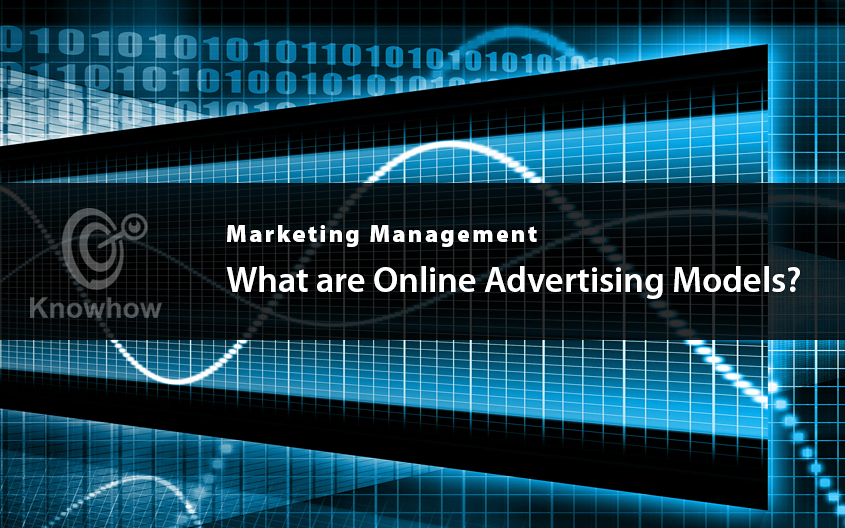
If you’re in advertising, but you’re just getting to learn more about online ads, this article will be a great introduction. We’ll analyse some of the most common advertising models and explain their advantages.
However, we won’t just cover the basics; we’ll help you understand online advertising models and make it easier for you to prepare your budget. After all, paying and bidding for spots on search engines is something every advertiser has to do nowadays. If your website isn’t ranking well and you’re not working on improving that, then you’re not doing your job properly.
You must have heard of these abbreviations a million times – CPM, CPA, CPC, and CPL – but they meant little or nothing to you.
Each of these advertising models is different, and each is a tool that will help you reach a different goal. If you need more visits, you’ll use one model, if you need more conversions or sign-ups, you’ll use others. Luckily, online advertising offers a multitude of customisation options, so you can choose an option that suits you the best, and is most in line with your business model.
Here Are the Big Four
1. Cost per Click (CPC)
Sometimes people use PPC or Pay per Click for this advertising model, but it all signifies one thing. CPC is online advertising where you pay the search engine every time someone clicks on your ad. In the end, it’s how much you spend to get people to click on your advertisement. You can also define CPC as an online advertising payment model where cost depends completely on clicks.
Search engines such as Google, Bing, and Yahoo offer two options — they can charge you a flat rate per click, or let you bid for paid inclusion in the SERPs (search engine result pages). When it comes to popular social media platforms, Cost per Click is determined based on their algorithms, your settings, and your desired audience.
Calculation for CPC is done simply. You divide your total advertising costs by the number of ads clicked, and you get how much one click costs.
What you get is just how much each person’s click has cost you, but also straight up results that allow you to plan future campaigns and enable you to test the effectiveness of your strategy.
On the other hand, bid-based Cost per Click is a slightly different model. That’s when a search engine company invites interested organisations and individuals to bid for inclusion on their SERPs.
2. Cost per Action (CPA)
Another pricing method for marketing on search engines and online platforms is Cost per Action or Cost per Conversion. Put into simple terms, that is the price you, the advertiser, you pay for every person who takes a certain action you previously defined.
For instance, when people advertise online, they usually pay for people to click on their ads and do something specific. In some cases, it’s registering, in others, subscribing to the newsletter, and in some, it’s leaving a contact.
Either way, the point of the CPA is that you only pay for desired outcomes. You don’t pay for people to simply see your ad. You only pay for those who also did what you wanted them to do. That is a lot more valuable as a form of advertising than most other models, but it also costs more. So before you go straight for it, make sure this model suits your business.
Just think of it like this. How many times have you, personally, clicked on an ad online? Many. How many times have you gone to the landing page of the website whose ad it was and performed an action? Once, twice, five times? The other times you simply leave the website never to return. That’s the point. With CPA, you don’t pay for people who leave.
3. Cost per Mille (CPM)
At the moment, this is one of the most popular advertising models. It’s an advertising model that the majority of media outlets use most frequently, as it provides them with the best reach. Cost per Mille is how much you, the advertiser, pay for every thousand impressions.
That means that you get CPM simply by dividing the total cost by the number of thousands of page views you’ve received because people came to your website from the SERPs.
CPM is the best way for you to calculate the return on investment from advertising via different media, platforms, and search engines. For instance, if you’re running different advertising campaigns via different media, CPM will give you a good, simple metric. That metric will allow you to see just how well your investment is doing, or how poorly and where to focus your attentions.
Thanks to CPM, you’ll easily see just how efficient your ad campaign is and which platform is paying off the most.
4. Cost per Lead (CPL)
CPL might seem a lot like CPA, as they are both based on user actions, but they do differ significantly.
CPA is determined based on people performing elaborate actions, while CPL is much more basic. Cost per Lead is all about the “lead”. A lead can mean that the user is leaving simple contact information or performing a basic signup or even requesting a quotation.
Another difference is in control over the advertisement. The CPA model is publisher-centric, as they are the ones who get to choose where and when they run your ads. However, the CPL model is advertiser-centric, where you get to choose where your ads will be.
In the End
Nowadays, everything is online. If you’re not, it’s like you don’t even exist. Everything is available at a simple mouse click or a screen tap, and your marketing has to keep up with the times. These advertising models will allow you to remain relevant while growing your business.
Related content:
Marketing Management Knowhow – learn more about marketing with our collection of educational articles.
From corporate promotional pens, canvas bags, logo mugs, water bottles, through to clothing, notebooks, toys and novelties and desk pads, here at GoPromotional we believe that you are sure to find the perfect giveaways to help successfully market your brand.
If however, you require further information or have any specific questions, don’t hesitate to give a member of our experienced team a call on 0800 0148 970 or simply email us today.






